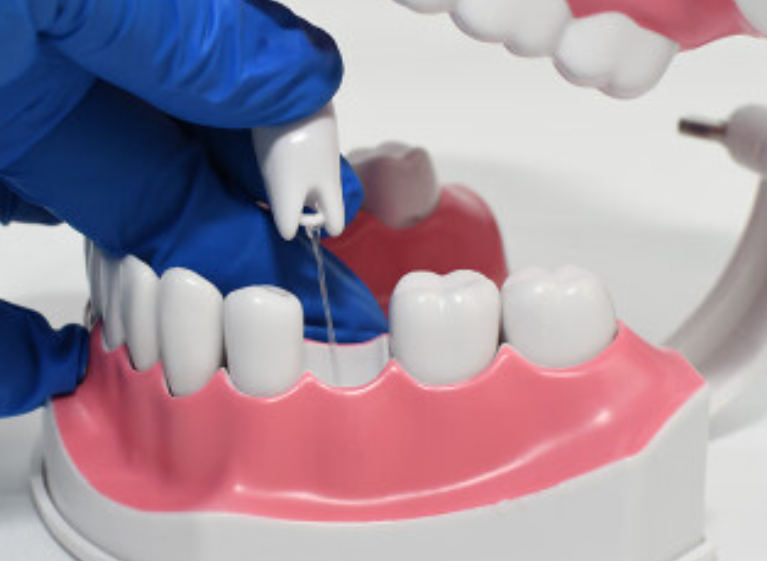
For people who often have swollen gums, painful bleeding, frequent dental congestion, tooth shrinkage, teeth become "long", floss is a tool to clean teeth.
As long as you learn to floss, you will find that the cleaning effect of the tooth surface, the gum and the gap between the teeth is significantly improved, and it has a pleasing advantage: light and portable.
Recently, however, there have been rumors that "flossing doesn't work." Is that really the case?
Rumor test: Floss doesn't work?
According to reports, a study reviewing 12 previous trials found that adding floss in addition to brushing can slightly reduce gingivitis compared with just brushing; But when it comes to reducing plaque, there is little discernible difference.
In addition, when it comes to preventing tooth decay, these trials all show that flossing doesn't make any difference. As a result, flossing is no longer recommended in the latest dietary guidelines.
Floss is actually recommended, especially for patients with large gaps and periodontal disease.If you have gingival inflammation (commonly known as "sore teeth"), bleeding, periodontal pocket formation, alveolar bone resorption, reduced alveolar bone height, loose teeth, displacement, and weak chewing, then periodontal disease has caught your eye.
Q: What is the ideal tooth cleaning program?
It's not enough to clean your teeth with a toothbrush every day. The ideal dental cleaning program to "mix and match", for people with periodontal disease, there are generally four programs: on the basis of daily brushing, respectively with the use of dental floss, tooth space brush, toothpick, and commonly known as "water floss" pulse water flusher these four methods, at the same time, every six months to a year should go to the hospital dental cleaning.
Dental adjacent surface cleaning is very necessary, because the cleaning area of brushing is limited to the lip side, the tongue side and the occlusal surface, the adjacent surface of the teeth, the gap between the gums and the teeth is not brushed, and these two easy to be missed location is precisely the periodontal disease, caries high incidence area, we must use the appropriate adjacent surface cleaning tools to assist teeth cleaning.
In general, the adjacent gap cleaning tool is used once every morning and once every night, if there is no time in the morning, a thorough cleaning at night can also achieve the effect.
Dental floss, interdental brush, toothpick and "water floss" are four cleaning options that have been clinically proven to be effective in cleaning adjacent teeth.
Among them, the interdental brush is the most efficient and the most clear. A space brush is recommended for patients with receding gums and an enlarged space that can accommodate a space brush. The interdental brush can penetrate about 2 mm below the gingival, which can effectively reduce gingivitis and can reduce plaque on the adjacent surface by about 30%.
Q: Which shape should I choose for floss?
At present, there are flat, round and other floss on the market, there are boxed hand-pulled floss wrapped on a roller, and there are rod shaped bow floss.
Among them, the flat floss with wax works best. Hand-pulled floss needs to be pulled out 30 to 40 centimeters each time, the advantage is that it can clean the teeth from multiple angles, and the cleaning effect is the most ideal, but it takes many exercises to master.
The advantages of rod-shaped dental floss are portable and fast, but because the Angle is fixed, the operation is not convenient when cleaning the back teeth, it is not easy to put it in a position parallel to the tooth surface, and it is easy to damage the gums, and the cleaning effect is not good.
Compared with round floss, flat floss with wax can form a better contact surface when surrounding the adjacent surface, and the cleaning effect is better.
For some members of the public who think that "flat dental floss feels very soft to use, easy to spread, and no force to clean teeth", if the adjacent surface of the teeth is smooth, flat dental floss generally will not become dispersed. The above problems in use precisely show that the condition of the adjacent surface of the tooth has been worrying.
Q: Can children floss?
Children can floss with the help of their parents. Especially in the dental replacement period, the teeth are easy to plug things, but also easy to produce plaque, but also should use floss.
For some elderly people worried that flossing will loosen their children's teeth, Zhao Chuanjiang believes that such concerns are unnecessary, since the use of experience since the 19th century has proved that the clinical effect of flossing is very good.
Q: Does the interstitial brush make the gap between the teeth wider?
No. The appropriate brush head should be selected according to the size of the tooth space. Many people worry that using a gap brush will cause bleeding in the gums, causing them to recede further.
Bleeding gums indicate inflammation in the gums themselves and cannot be attributed to the interdental brush.
Choose the right size interdental brush and use it properly. Different brands of tooth space brush specifications are not the same, professional tooth space brush will be divided into 7 to 8 grades according to the diameter of the brush head.

